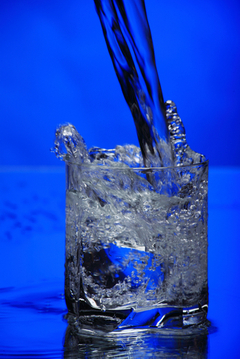Great Backyard Bird Count February 12-15
http://www.emagazine.com/view/?5032
Bird Trackers
February 1, 2010
Reported by Erin Schneider
Become a “citizen scientist” this winter by participating in the Great Backyard Bird Count (GBBC). During the weekend of February 12-15, you and your family can aid in the necessary monitoring of birds across our nation, and assist research facilities at Cornell Lab of Ornithology, the National Audubon Society and Bird Studies Canada. Last year, participants recorded more than 93,600 online checklists of birds sighted, creating the continent‘s largest instantaneous snapshot of bird populations ever recorded.
“The GBBC is a perfect first  step toward the sort of intensive monitoring needed to discover how birds are responding to environmental change,” says Janis Dickinson, Director of Citizen Science at Cornell Lab. “Winter is such a vulnerable period for birds, so winter bird distributions are likely to be very sensitive to change. There is only one way—citizen science— to gather data on private lands where people live….GBBC has enormous potential both as an early warning system and in capturing and engaging people in more intensive sampling of birds across the landscape.”
step toward the sort of intensive monitoring needed to discover how birds are responding to environmental change,” says Janis Dickinson, Director of Citizen Science at Cornell Lab. “Winter is such a vulnerable period for birds, so winter bird distributions are likely to be very sensitive to change. There is only one way—citizen science— to gather data on private lands where people live….GBBC has enormous potential both as an early warning system and in capturing and engaging people in more intensive sampling of birds across the landscape.”
After entering sighting data at birdcount.org, participants can explore real-time maps and charts that follow the birds’ movements. Contributors are also encouraged to submit photographs they have taken during the count to the GBBC photo contest where they will be entered to win an assortment of prizes.
“Taking part in the Great Backyard Bird Count is a great way to get outside with family and friends, have fun, and help birds—all at the same time,” says Audubon Education Vice President Judy Braus. “Even if you can identify a few species you can provide important information that enables scientists to learn more about how the environment is changing and how that affects our conservation priorities.”
Pennsylvania’s clean drinking water may be in jeopardy without regulations
Editorials »
Pennsylvania’s clean drinking water may be in jeopardy without regulations
By Patriot-News Editorial Board
February 01, 2010, 7:10AM
Drinking water could become tainted if more regulations on Marcellus Shale drilling are not implemented.
 Clean water is something most Americans take for granted. When we turn on the tap, we expect a steady flow of clean water at whatever temperature we have indicated on the faucet dial.
Clean water is something most Americans take for granted. When we turn on the tap, we expect a steady flow of clean water at whatever temperature we have indicated on the faucet dial.
Pennsylvania can no longer take drinking water for granted. The state faces a new threat to our water supply in the form of Marcellus Shale gas drilling. The process to extract the gas is called hydraulic fracturing, and as the name implies, it is hugely water intensive.
Fracturing has been around for a long time, but Marcellus drilling requires deep wells and even more water usage to break the shale and force the gas up.
The problem isn’t so much the initial quantity of the water. Pennsylvania is blessed with an abundance of fresh water. The issue is all the wastewater after it has been through this intensive industrial process.
At the moment, the resulting wastewater from operating Marcellus Shale wells is treated for basic contamination and then released back into the state’s streams and rivers.
But wastewater from Marcellus Shale isn’t normal. It often contains higher than average “total dissolved solvents,” some of which are toxic in high concentrations and can lead to conditions such as bladder cancer.
The state must set regulations on total dissolved solvents to protect our drinking water.
Some in the gas industry oppose harsher water regulations as draconian and “anti-competitive.” They argue that these solvents dilute away in the rivers.
That sounds nice, but there’s a basic math problem here. Our streams, while numerous, are not enough to dilute the quantities of water expected when Marcellus Shale drilling is up and running.
It was actually two natural gas drilling companies (Atlas and Range) that approached the Department of Environmental Protection and warned that if Marcellus Shale hydraulic fracturing explodes in number, then stream dilution is not going to be enough. Several rivers and streams are likely not to make the federal drinking water acceptability threshold.
In other words, our drinking water could become tainted.
The state already has experienced this once in the Monongahela River in 2008. That year, 17 water intake points from Pittsburgh to West Virginia were deemed unsafe from elevated bromide solvent levels (the cause was a number of factors of which gas drilling is thought to be one). We were behind the curve in solving the problem, and we do not want to be there again.
New “wastewater treatment requirements” have been proposed by DEP Secretary John Hanger. The easily accessible 10-page document is up on the department’s Web site for public review through Feb. 12. If enacted, the new rules would make Pennsylvania one of the leaders in this area.
Before anyone balks, let’s remember that Pennsylvania’s Marcellus Shale has been widely projected to be the largest shale gas bed in the world, outstripping even the Barnett Shale in Texas.
We’re going to have a lot more wastewater to deal with than everyone else, and DEP is right to be proactive.
The regulations set new levels of acceptability. For the first time, all companies would have to treat the wastewater for total dissolved solvents.
For bottom-line types, it boils down to this: Companies would have to pay slightly more to clean the wastewater before it goes back into Pennsylvania’s waterways. DEP estimates no more than 25 cents per gallon.
It’s a small price to pay for safety of future Pennsylvanians.
Watering the regulations down would be a mistake.
2009 Second Warmest Year of Warmest Decade on Record
NEW YORK, New York, January 25, 2010 (ENS) – The year 2009 was tied for the second warmest year in the modern record, shows a new analysis of global surface temperature from the National Aeronautics and Space Administration. Conducted by NASA’s Goddard Institute for Space Studies in New York City, the analysis also shows that in the Southern Hemisphere, 2009 was the warmest year since modern records began in 1880.
http://www.ens-newswire.com/ens/jan2010/2010-01-25-03.html
